#byzantine museum
Text

Βυζαντινό Μουσείο Χαλκιδικής – Μετοχιακό συγκρότημα Νέων Φλογητών
#Χαλκιδική#Βυζαντινό μουσείο#Νέα Φλογητά#Ελλάδα#Μακεδονία#Chalkidiki#Macedonia#Greece#Byzantine Museum#Nea Flogita#architecture#culture
4 notes
·
View notes
Text
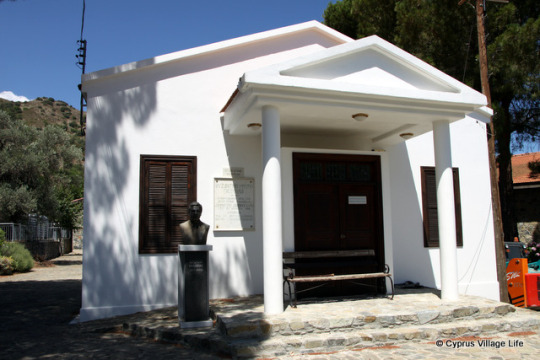
Pedoulas Village Byzantine Museum
#Pedoulas#Pedoulas Village#Cyprus#Cypriot#Kypros#Byzantine#Byzantine Museum#Nicosia#Village#Culture#History#Travel#Holidays#Wanderlust
0 notes
Text
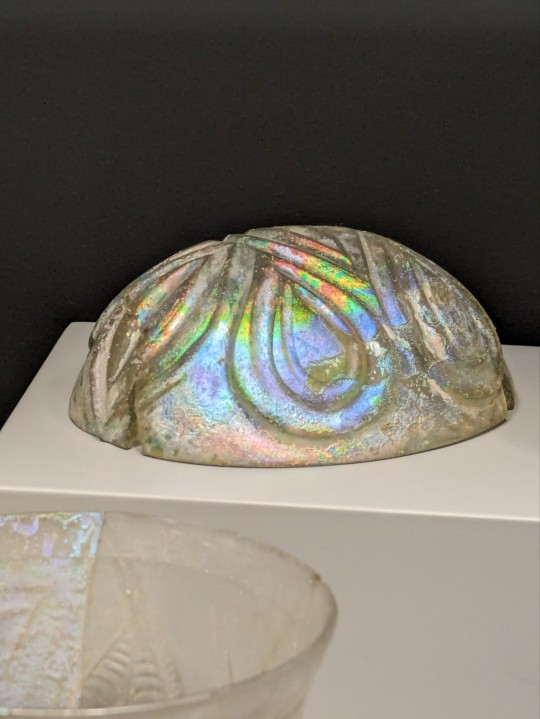

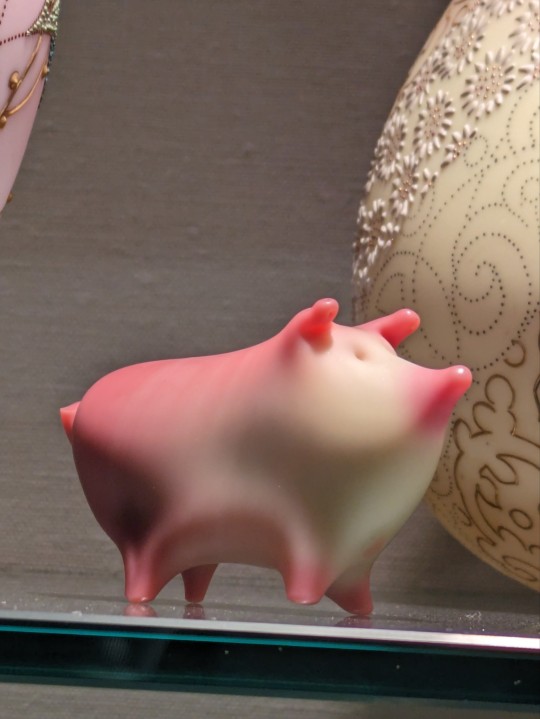
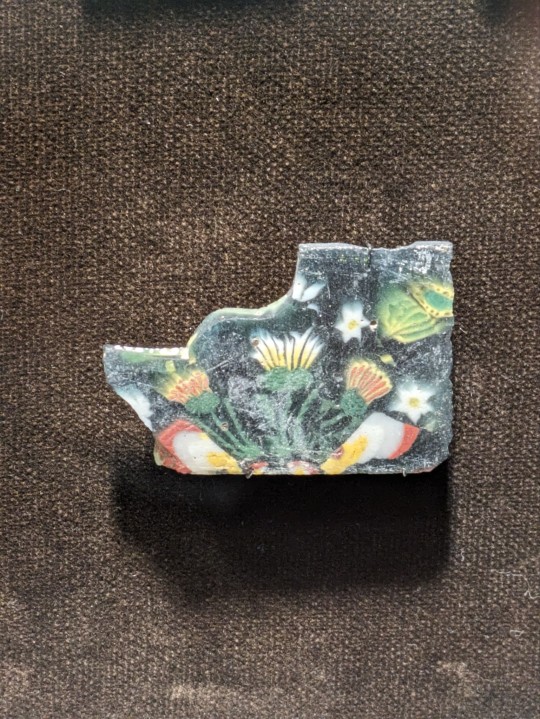

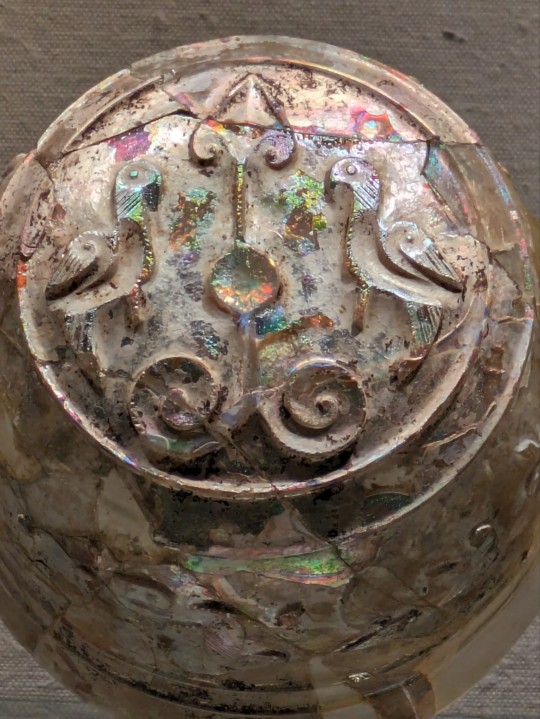
Favorite historical glass from the glass museum today 🍧🔮
#glass#glass art#artifacts#historical#history#museum#pig#mosaic#art#roman#ancient roman#german#me#mine#pictures#images#painted glass#iridescent#Byzantine
251 notes
·
View notes
Text
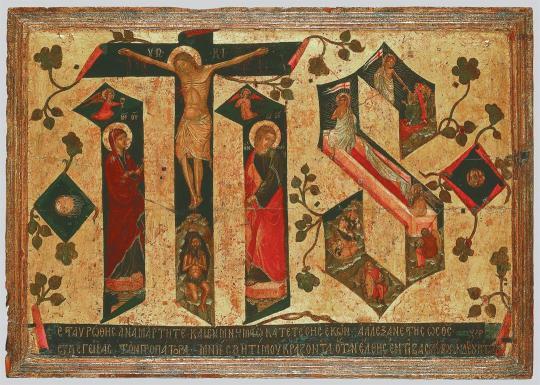
Jesus Savior of Humankind, attributed to the Cretan artist Andreas Ritzos (1421-92). The painting depicts the Crucifixion, Resurrection, and Harrowing of Hell within the letters I(ESUS) H(OMINUM) S(ALVATOR). Egg tempera on wood; 44.5 cm high x 63.5 cm wide. Now in the Byzantine and Christian Museum, Athens.
#art#art history#Andreas Ritzos#religious art#Christian art#Christianity#Catholicism#Byzantine Christianity#Cretan art#Italo-Cretan art#15th century art#egg tempera on wood#Byzantine and Christian Museum Athens
263 notes
·
View notes
Text

~ Literary Papyri: Cyril of Alexandria, On Adoration and Worship in Spirit and in Truth.
Date: A.D. 550-614
Period: Byzantine
Place of origin: El-Deir (Fayoum, Egypt) (?)
#history#museum#archeology#archaeology#papyri#byzantium#byzantine#Cyril of Alexandria#Egyptian#Egypt#a.d. 550 b.c.#a.d. 614
549 notes
·
View notes
Text

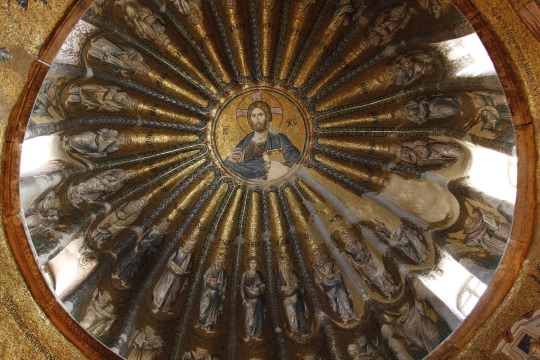

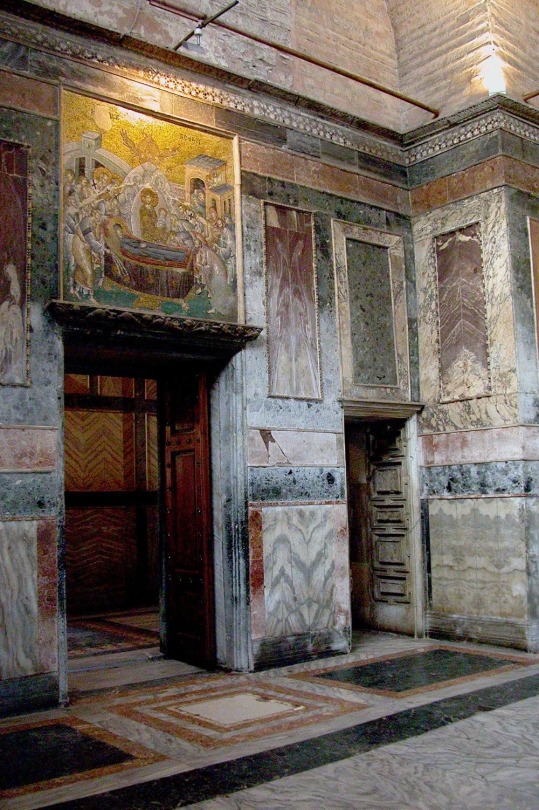
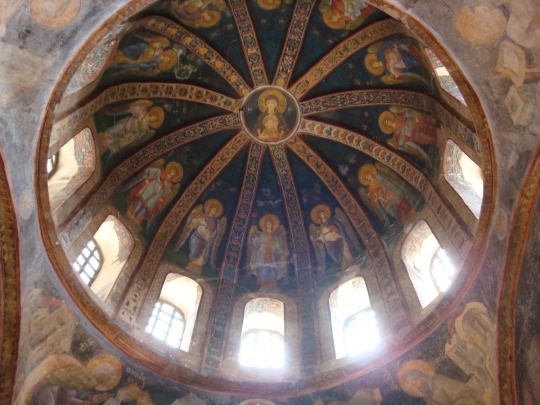
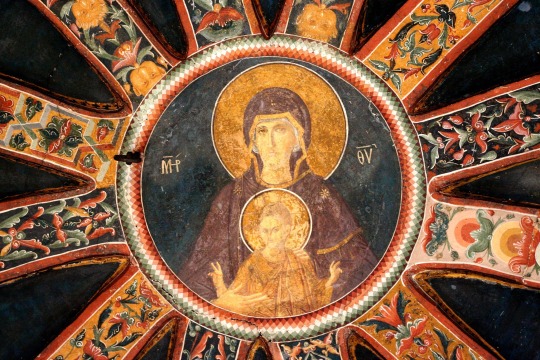

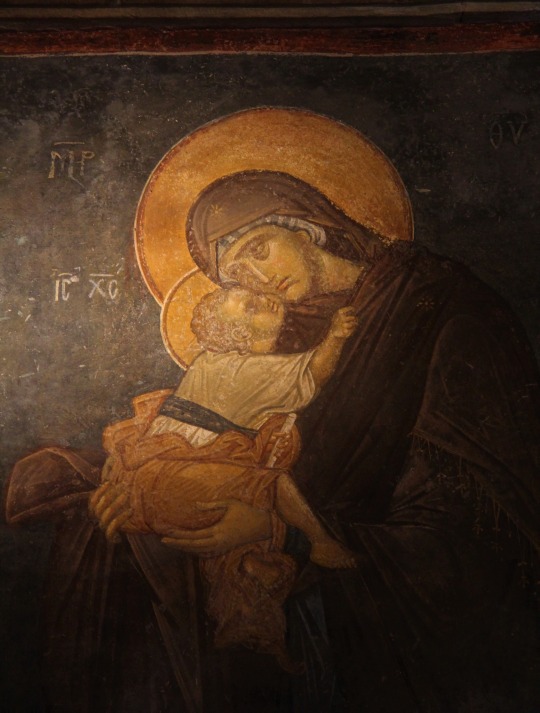
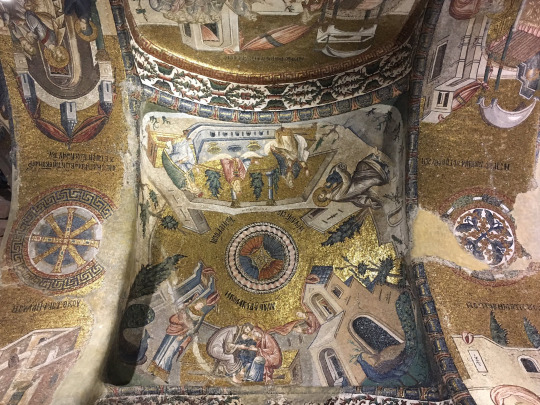

Church of San Salvador de Chora, is one of the most beautiful examples of a Byzantine church that can be seen in the city of Istanbul, Turkey. Although its first construction dates from 536-557, what we can see today is the reconstruction that was carried out between 1077-1081, during the reign of the Byzantine emperor Alexios I Komnenos (he was emperor between 1081 and 1118).Today it is a museum and you can see the richness and beauty of its pictorial and musical works, one of the most important bequeathed by Byzantine artists.
291 notes
·
View notes
Text
#MetalMonday:
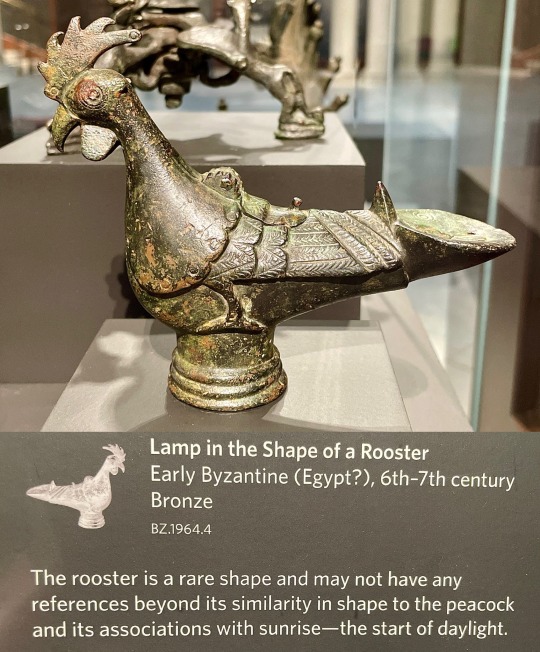
Lamp in the Shape of a Rooster
Early Byzantine (Egypt?), 6th-7th c.
Bronze, cast & chased, 11 x 13.5 cm (4 5/16 x 5 5/16 in.)
On display at Dumbarton Oaks
“The rooster is a rare shape and may not have any references beyond its similarity in shape to the peacock and its associations with sunrise - the start of daylight.”
More info:
“Lamps are among the most widely used & imaginatively conceived works in antiquity. They were made predominantly in terracotta, but many examples in bronze survive because of their durability. Artists drew inspiration from all aspects of ancient culture, from the mythological realm, illustrated by a lamp with a griffin-head handle in the Dumbarton Oaks collection (BZ.1962.15), to the natural world, reflected in this rooster lamp. Identified by its distinctive coxcomb & wattles, the head is tipped forward at an angle that is typical of this barnyard bird. The feathers on the body are chased (i.e. incised after the lamp was cast).
The rooster, or cock, is proverbially the harbinger of the new day. This connection with dawn and daylight may have been the inspiration for crafting the lamp. One mention occurs in the New Testament when Christ tells Peter that he will deny him three times before the cock crows (Matthew 26:34). It is more likely the former connection than the Biblical reference inspired the rooster of this lamp.”
info via http://museum.doaks.org/objects-1/info/27342
#animals in art#museum visit#bird#birds in art#rooster#Byzantine art#ancient art#Dumbarton Oaks#metalwork#bronze#lamp#domesticated animals in art#Metal Monday
31 notes
·
View notes
Text


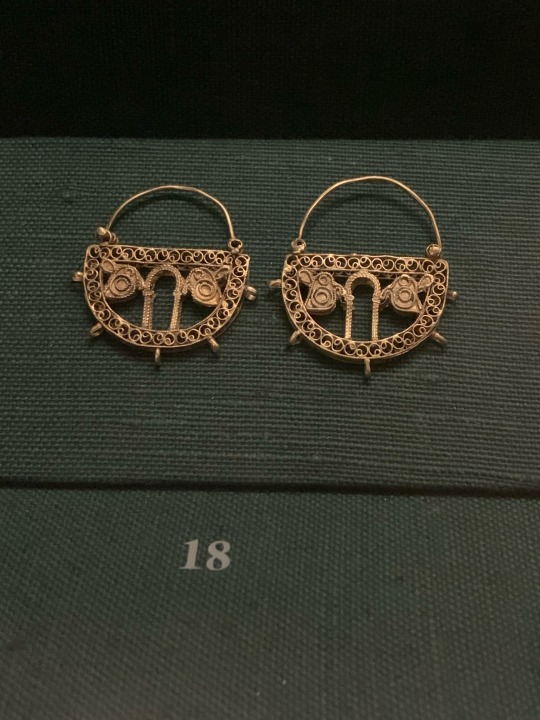
Byzantine-era earrings
Benaki Museum, Athens, Greece
#Byzantine#Medieval#museums#tagamemnon#Greece#jewelry#earrings#historical jewelry#historical fashion#Benaki Museum#Athens
71 notes
·
View notes
Text
Some feel-good recent news:
Stone tools of Neanderthals were discovered in the Pindus mountains, particularly in the region of Samarina, Grevena. They date from 60,000 - 80,000 years ago. Mountain archaeology has not been very developed so far in Greece as archaeologists believed the human activity was centred in coastal areas and the lowlands. This discovery is an incentive for the development of that field of archaeology here as well.
The antiquities are returning to the Thessaloniki subway. Yesterday a massive fountain building was put back to the station. It dates from the 4th century. Another one will return on the next weekend. The road (decumanus maximus) has been returned already. The lighting planning has been given to the public.
Wind parks in Europe use more and more a Greek technology, aiming to prevent birds from falling on the wind turbines. The turbines have sensors which detect the approach of a bird and start producing noises that repel it. If the bird does not change its direction, the turbine stops moving.
There are talks between the government and the British Museum for the repatriation of Greek antiquities, intending to find some middle ground. Greek PM didn’t reveal details but the rumours are that it is discussed for a branch of the British Museum to open in Greece, where the antiquities will be transferred.
The ERTFLIX streaming platform published its viewership statistics. The platform has more than doubled the viewership of the public state TV channels. Only in November about 9,000,000 views were recorded (the Greek population is 10 mil). The platform improved significantly the viewership of the TV shows as most users would watch an episode several days or weeks after an episode aired on TV. To foreign followers, this might seem trivial, but the state channels have always been a) funded by the public and b) of a high quality but suffering from low viewership, so it is very pleasant that more and more people appreciate and enjoy what the state channels offer, especially since they contribute financially to it (with a slight tax, but still).
I have professed my love for ERTFLIX before and I just interrupted this post to go to the app again and I stumbled over a short stop-motion animated series teaching the kids about significant exhibits in Greek museums???



Isnajzankajznanan this is Emperor Andronicus II Palaeologus and my Byzantine-phile ass is losing it now
And then a little later there is a show about Ozzy Osbourne’s world tour. Man I love ertflix, it’s definitely better than all paid subscription platforms in Greece and it is free.
#greece#Greek news#antiquities#British museum#neanderthal#innovations#stop motion#andronicus b palaeologus#Byzantine history#samarina#grevena#Thessaloniki#positivity#Macedonia#hide
150 notes
·
View notes
Text
23 notes
·
View notes
Text
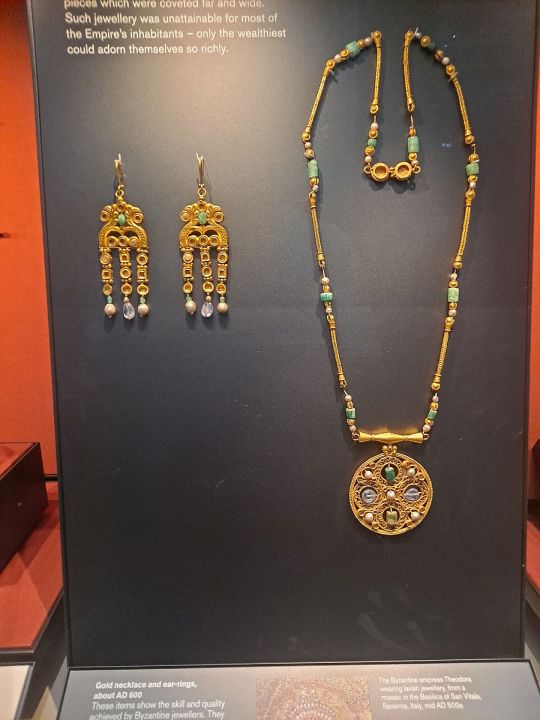
Byzantine necklace and earrings
About AD 600
British Museum
London, June 2022
129 notes
·
View notes
Text

Bust of a Woman with a Scroll, Constantinople, 4th-5th century, pentelic marble, Metropolitan Museum of Art, New York.
51 notes
·
View notes
Video




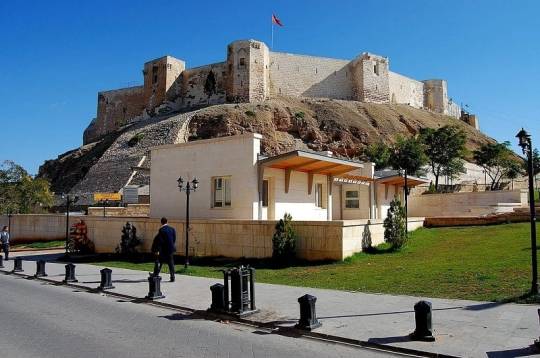

Ancient Gaziantep Castle Used by Romans and Byzantines Destroyed in Turkey Earthquake
An ancient castle in Turkey was one of the historic monuments damaged when major earthquakes hit the country and neighboring Syria, killing more than 2,000 people on Monday. Images show parts of the Gaziantep Castle, which was first built in the 2nd and 3rd centuries AD, during the Roman Empire, crumbling after the earthquake.
The 2,000-year-old castle is located in the Gaziantep region, about 80 miles south of the epicenter of one of the quakes in Kahramanmaras Province.
The castle, an archeological site, sits near the Gaziantep Archeology Museum, which includes works of the Late Hittite and Roman Periods during which the castle was built.
While there is no definitive information about when the castle was fist built, it was founded on top of an earthen mound that dates back some 6,000 years, to when an ancient city called Theban occupied the space.
It is believed to have been constructed as a watchtower during the Roman period between, the 2nd and 4th centuries AD. However, it was built up even more during the 5th century AD during the reign of Byzantine Emperor Justinianus, who was known as the "Architect of Castles."
The Ottomans repaired the castle over time, but it got a second full overhaul by Egyptian Sultan Qaitbay in 1481. There are 12 towers on the castle and the two towers near the main gate were rebuilt in 1557 by Suleiman the Magnificent during the Ottoman Empire.
By Caitlin O'Kane.
#Ancient Gaziantep Castle Used by Romans and Byzantines Destroyed in Turkey Earthquake#Gaziantep Castle#Gaziantep Archeology Museum#Byzantine Emperor Justinianus#Architect of Castles#Suleiman the Magnificent#archeology#archeolgst#ancient artifacts#history#history news#ancient history#ancient culture#ancient civil#roman empire#roman history#ottoman empire#byzantine empire#earthquake
104 notes
·
View notes
Text
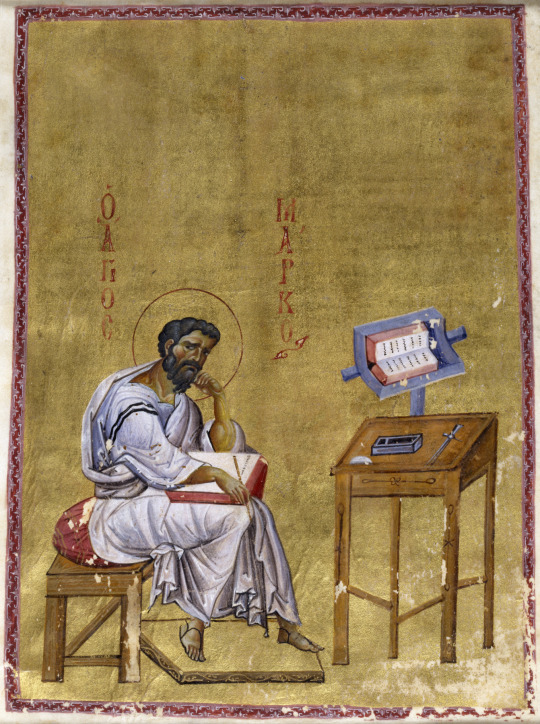
Mark the Evangelist seated in his study. Illuminated leaf (ink, paint, and gold on parchment) from a Gospel lectionary produced at Constantinople by an unknown artist, ca. 1025-1050 (during the "Macedonian Renaissance"). Now in the Walters Art Museum, Baltimore.
#art#art history#Middle Ages#medieval#medieval art#Byzantine#Byzantine Empire#Byzantine art#religious art#Christian art#Christianity#Saint Mark#illuminated manuscript#manuscript illumination#11th century art#Walters Art Museum
255 notes
·
View notes
Text


~ Floor Mosaic with Bust of Apolausis ("Enjoyment").
Period: Early Byzantine
Date: late A.D. 4th century-early 5th century
Medium: Mosaic on mortar
#archaeology#history#ancient#ancient art#museum#archeology#Byzantium#byzantine#mosaic#apolausis#enjoyment#4th century#5th century
750 notes
·
View notes
Text
youtube
Join Dr. Andrea Myers Achi, Mary and Michael Jaharis Associate Curator of Byzantine Art in The Met’s Department of Medieval Art and The Cloisters, for a virtual tour of Africa & Byzantium. Art history has long emphasized the glories of the Byzantine Empire (circa 330–1453), but less known are the profound artistic contributions of North Africa, Egypt, Nubia, Ethiopia, and other powerful African kingdoms whose pivotal interactions with Byzantium had a lasting impact on the Mediterranean world. Bringing together a range of masterworks—from mosaic, sculpture, pottery, and metalwork to luxury objects, paintings, and religious manuscripts—this exhibition recounts Africa’s central role in international networks of trade and cultural exchange. With artworks rarely or never before seen in public, Africa & Byzantium sheds new light on the staggering artistic achievements of medieval Africa. This long-overdue exhibition highlights how the continent contributed to the development of the premodern world and offers a more complete history of the vibrant multiethnic societies of north and east Africa that shaped the artistic, economic, and cultural life of Byzantium and beyond.
#the metropolitan museum of art#art#art history#religion#africa#byzantine#byzantium#sudan#Egypt#Nubia#Ethiopia#medieval#ancient history#Youtube
18 notes
·
View notes